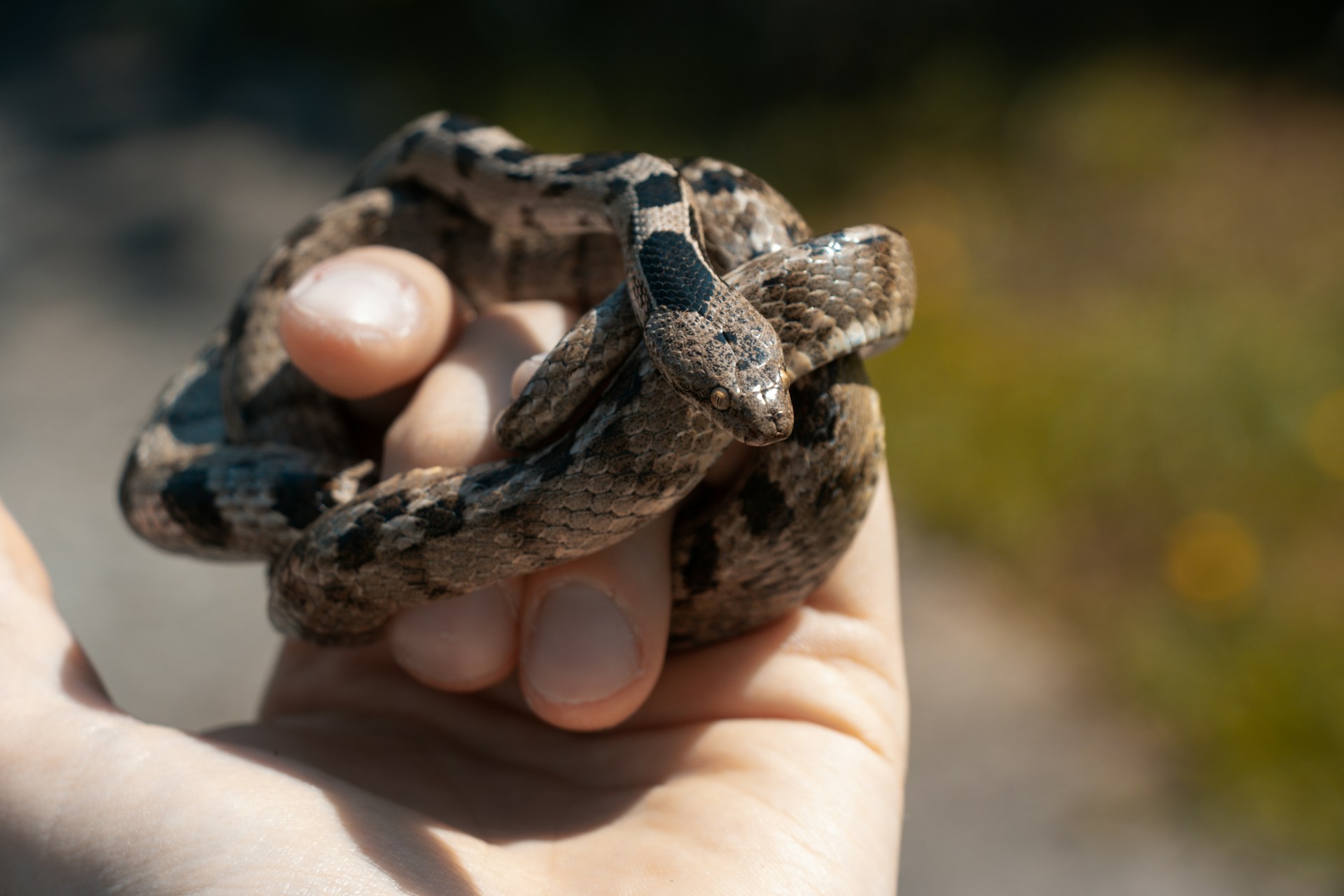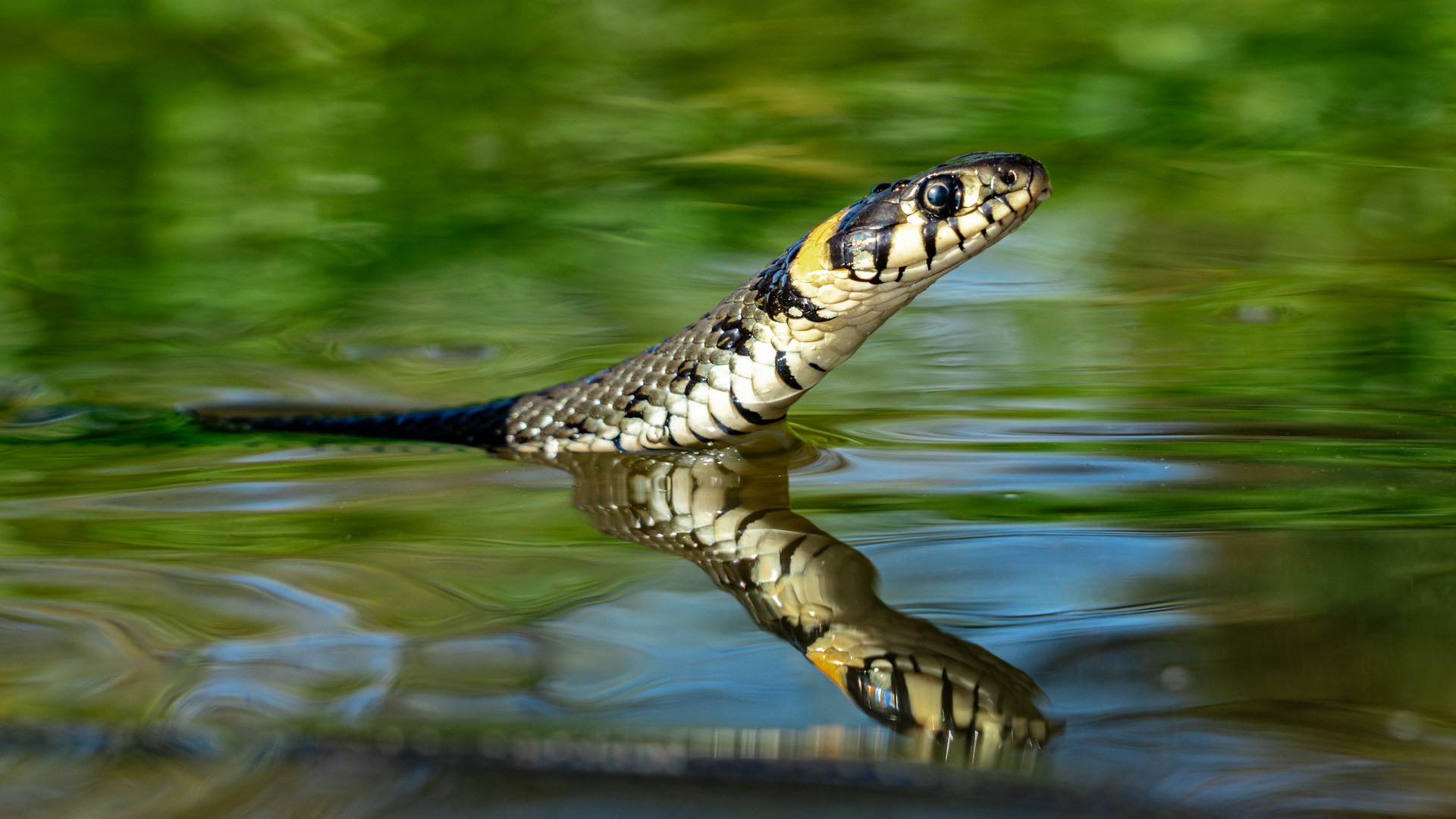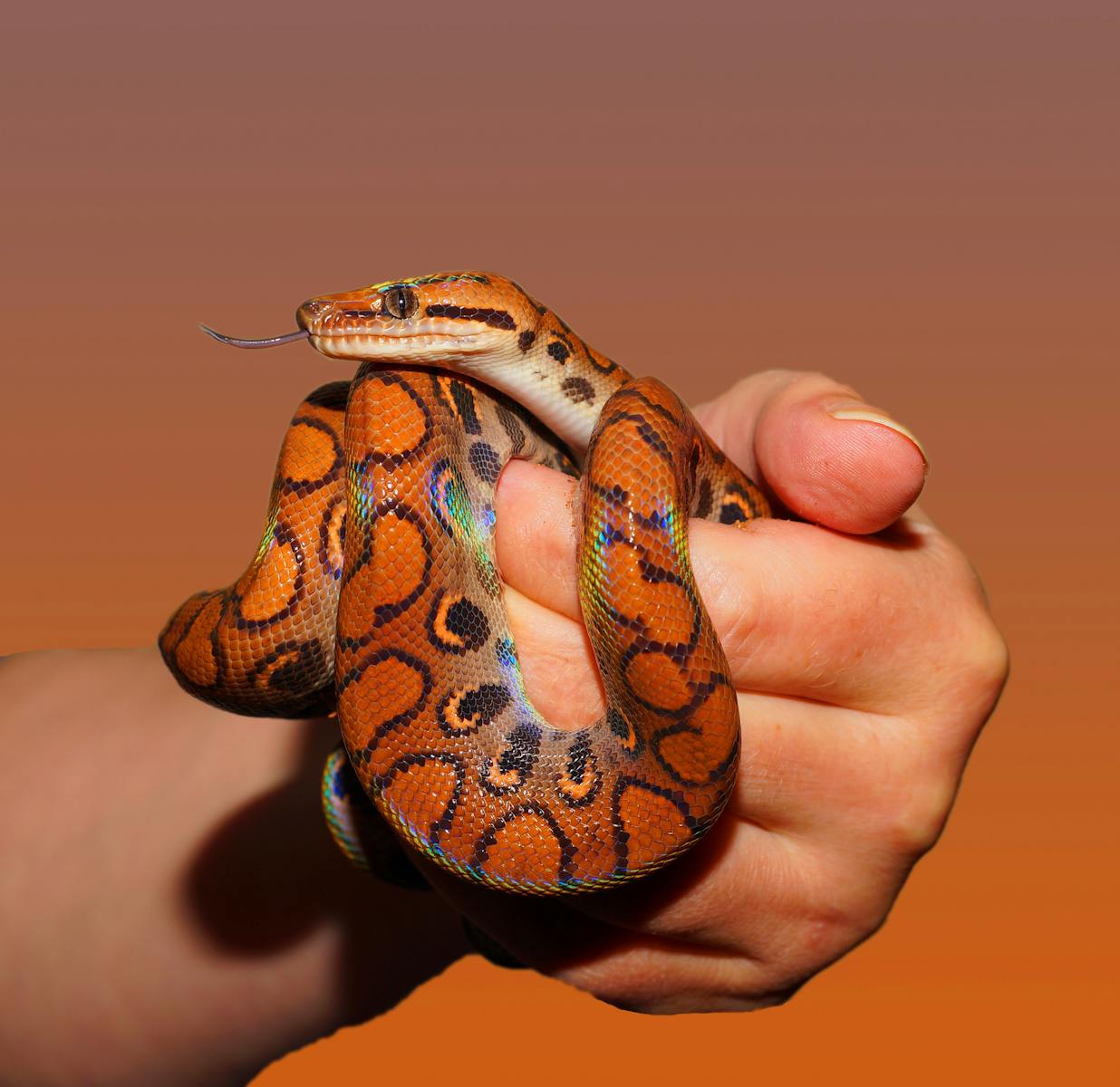Venomous snakes represent both fascinating subjects of study and potentially lethal hazards to those who work with them. While the general public is rightly advised to maintain a safe distance from these animals, herpetologists, wildlife rehabilitators, and other professionals often need to handle venomous species as part of their work.
This comprehensive guide addresses the specialized techniques, safety protocols, and equipment necessary for the safe handling of venomous snakes.
It’s important to emphasize that this information is intended exclusively for trained professionals with proper permits and extensive experience.
The techniques described here should never be attempted by amateurs or hobbyists, as improper handling can result in life-threatening envenomation.
Understanding the Risks of Venomous Snake Handling
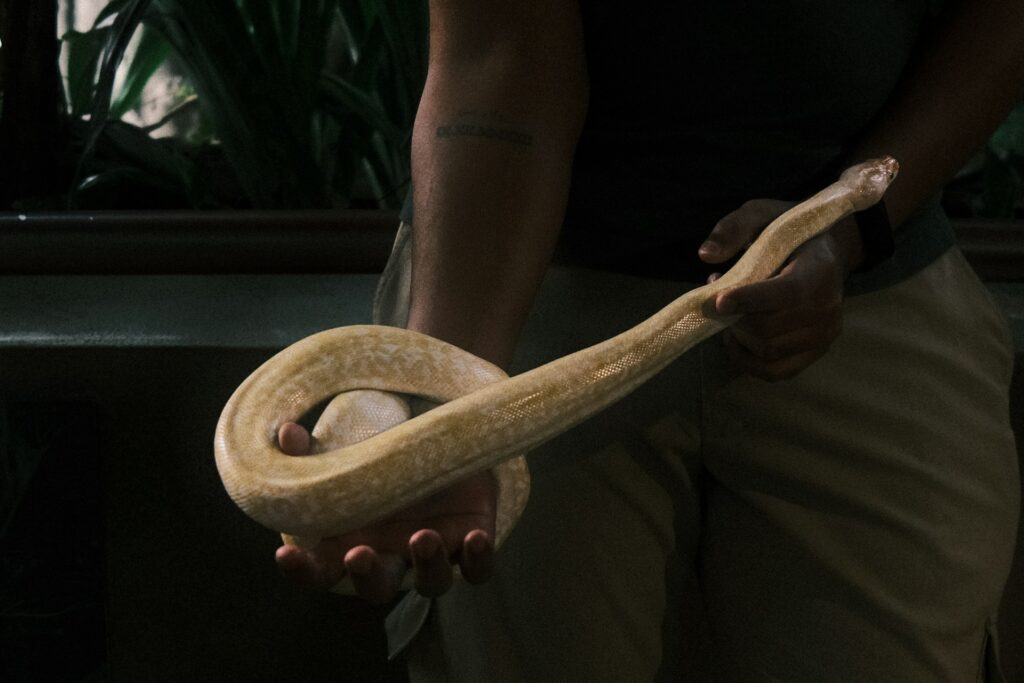
Working with venomous snakes involves inherent and significant risks that cannot be eliminated entirely, only managed through proper training and protocols.
According to published medical data, venomous snakebites can cause severe tissue damage, neurological impairment, cardiovascular complications, and in some cases, death.
Even experienced professionals face the possibility of accidents despite their knowledge and training. A single moment of inattention, equipment failure, or unexpected snake behavior can result in a bite that requires immediate medical intervention.
Understanding these risks clearly is the foundation of all safe handling procedures, as it creates the necessary mindfulness and respect these dangerous animals demand.
Professionals should regularly review case studies of handling accidents to maintain an appropriate level of caution in their work.
Essential Training and Qualifications
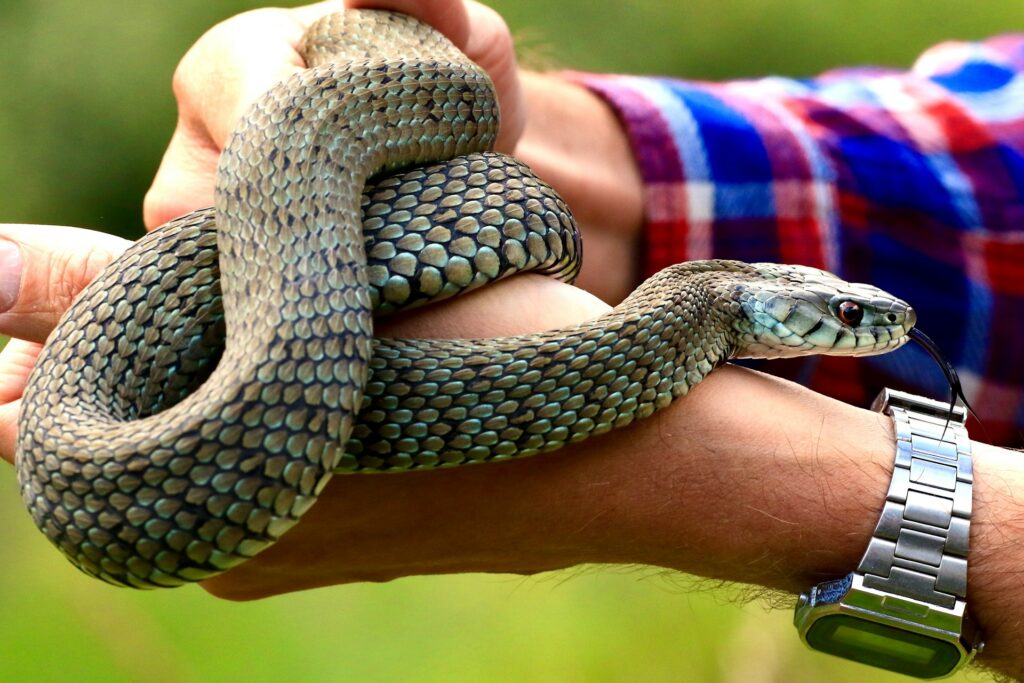
No one should attempt to handle venomous snakes without first completing extensive formal training under qualified mentors. Proper training typically includes an apprenticeship period of at least 1-2 years working alongside experienced handlers before attempting independent work with venomous species.
Professional certifications in herpetology or specialized venomous snake handling courses provide valuable theoretical knowledge but cannot replace supervised practical experience.
In most jurisdictions, legal permits are required for the possession or handling of venomous snakes, with requirements varying significantly by location.
Training should cover not only physical handling techniques but also deep knowledge of snake behavior, biology, and species-specific temperaments to anticipate reactions.
Mental preparation is equally important, as handlers must maintain composure and clear thinking even in high-pressure situations.
Species-Specific Considerations and Behaviors
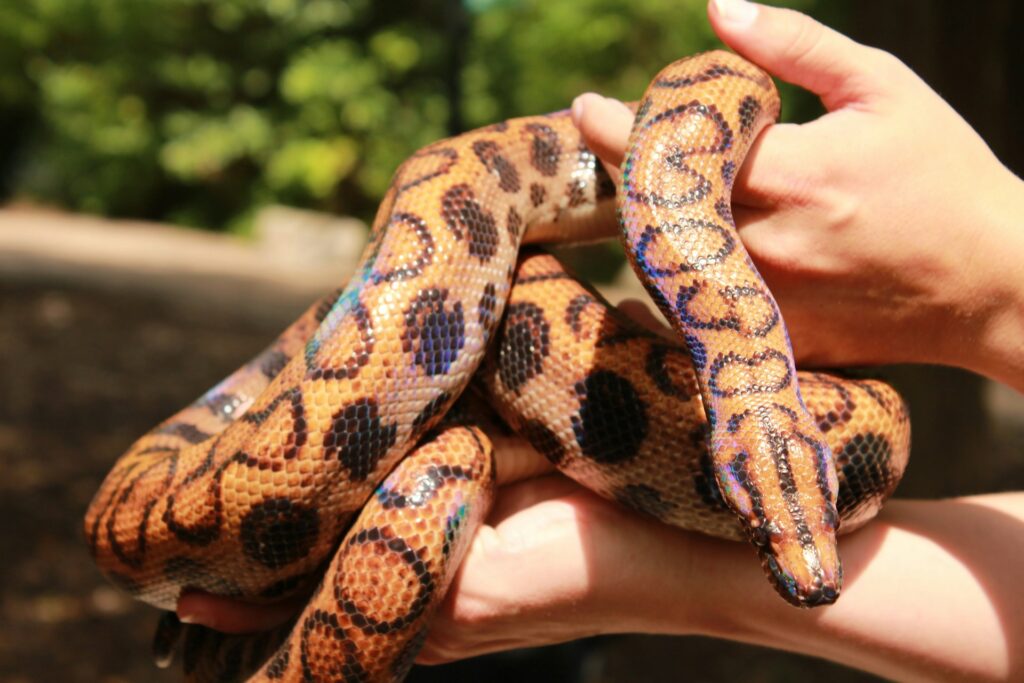
Each venomous snake species presents distinct behavioral patterns, defensive responses, and handling challenges that must be thoroughly understood before any handling attempt.
Elapids such as cobras and mambas generally rely on rapid strikes and neurotoxic venom, requiring handlers to maintain greater distances and use longer tools.
Vipers, including rattlesnakes and puff adders, typically have more predictable striking distances but possess hemotoxic venoms that can cause massive tissue damage.
Australian elapids like brown snakes combine exceptional speed with highly toxic venom, demanding specialized handling approaches. Understanding seasonal variations in behavior is crucial, as many species become more aggressive during breeding seasons or more lethargic during colder months.
The handler must study individual temperament variations within species as well, as some specimens may be consistently more defensive or unpredictable than others of the same species.
Essential Safety Equipment for Venomous Snake Handling
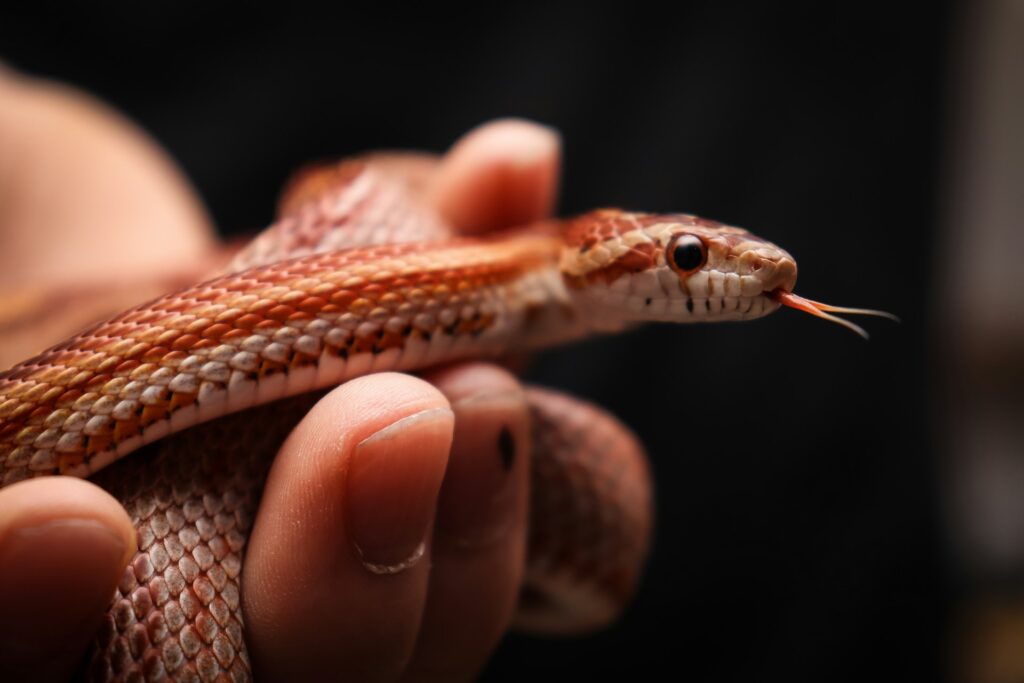
Professional snake handlers must invest in proper safety equipment, with no compromises or substitutions that might increase risk.
The fundamental tool is a high-quality snake hook of appropriate length for the species being handled, typically ranging from 24 to 52 inches depending on the snake’s strike range and size.
Clear acrylic tubes with various diameters, known as snake tubes, are essential for safely transferring snakes from one container to another. Specialized snake tongs or pinning tools should be maintained in excellent condition and checked regularly for any signs of wear.
Personal protective equipment should include snake-proof gaiters or boots, thick leather gloves (though these do not provide complete protection against fangs), and face shields when working with spitting cobra species.
A proper snake-proof transport container with secure fasteners and ventilation must be readily available, along with a comprehensive first aid kit specifically designed for snakebite emergencies.
Setting Up a Safe Handling Environment
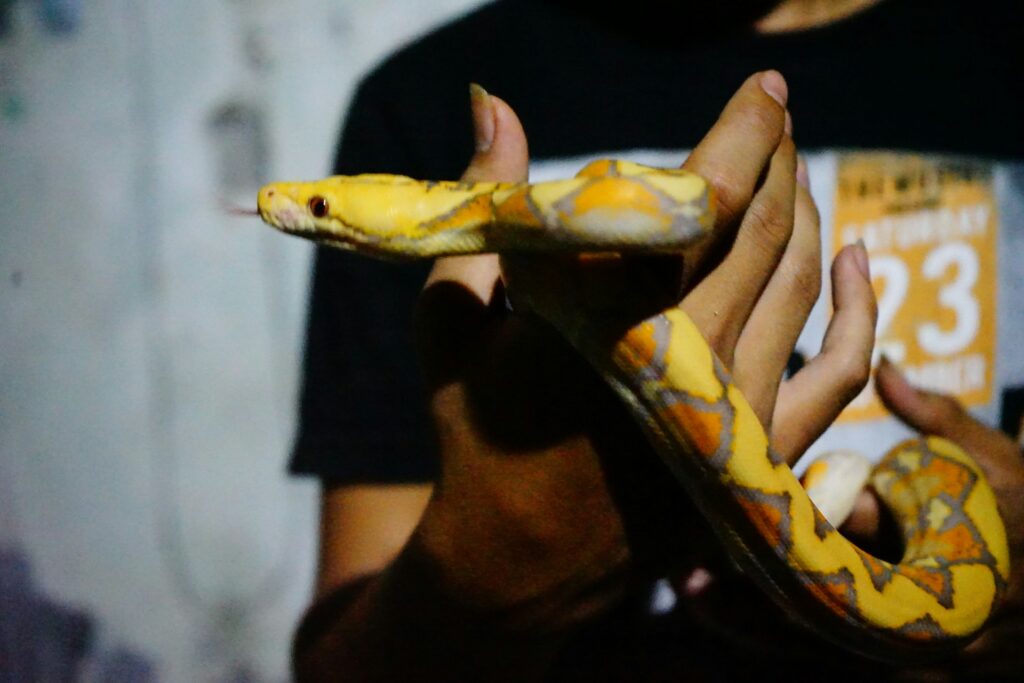
The environment where venomous snakes are handled must be carefully controlled to minimize risks and complications. The workspace should have restricted access, with only trained personnel allowed entry during handling procedures.
All potential escape routes must be sealed, including gaps under doors, vents, and windows. The handling area should be spacious enough to allow the handler free movement while keeping a safe distance from the snake.
Proper lighting is crucial, as shadows can make it difficult to track a snake’s movements accurately. The floor should be smooth and clear of obstacles that could cause a handler to trip or that might provide hiding places for an escaped snake.
Emergency protocols, including the location of first aid supplies and contact information for the nearest hospital with antivenom capabilities, should be prominently displayed.
A second trained handler should ideally be present as a safety observer during all venomous snake handling procedures.
Basic Handling Techniques and Approaches
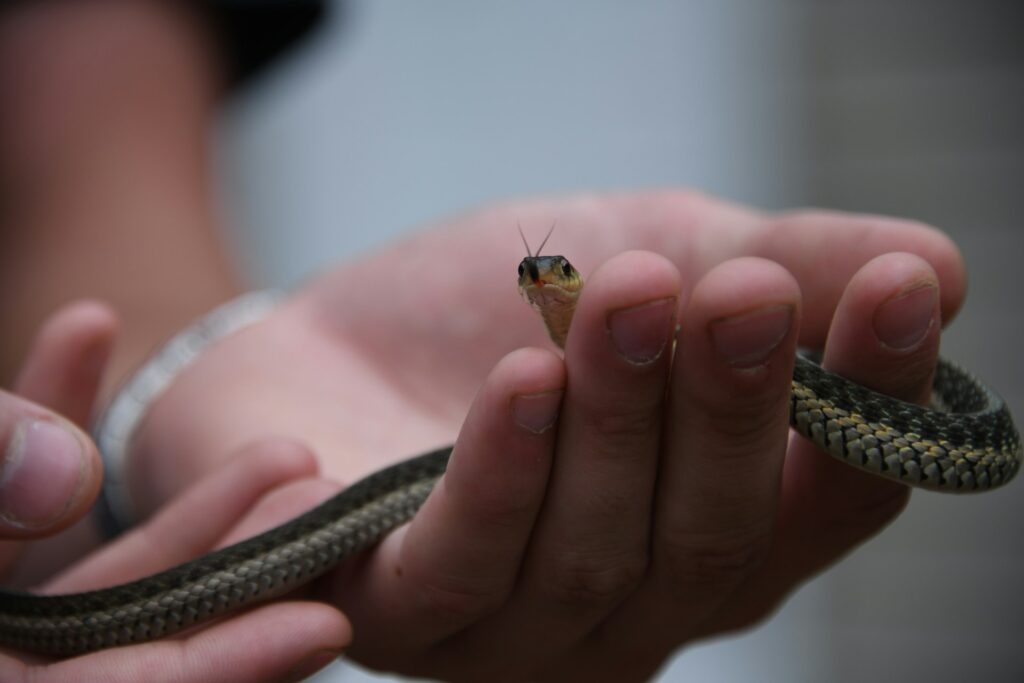
The fundamental principle in venomous snake handling is to maintain maximum distance between the handler and the snake’s head at all times.
The primary technique begins with gently guiding or lifting the snake using a snake hook placed at the middle of its body, never pulling or dragging the animal.
When greater control is needed, the tail-handling method may be employed for some species, grasping the tail while supporting the body with a hook, though this approach requires significant experience and is not suitable for all species.
The tubing technique, which involves guiding the snake head-first into a clear acrylic tube of appropriate diameter, provides the safest method for close examination or medical procedures.
For particularly aggressive species, the pinning technique may be necessary, using specialized tools to carefully secure the head while a second handler grasps behind the head, though this should be considered a last resort due to its stressfulness to the animal.
Throughout any handling procedure, movements should be slow, deliberate, and confident to avoid triggering defensive responses.
Hook and Tail Technique Mastery
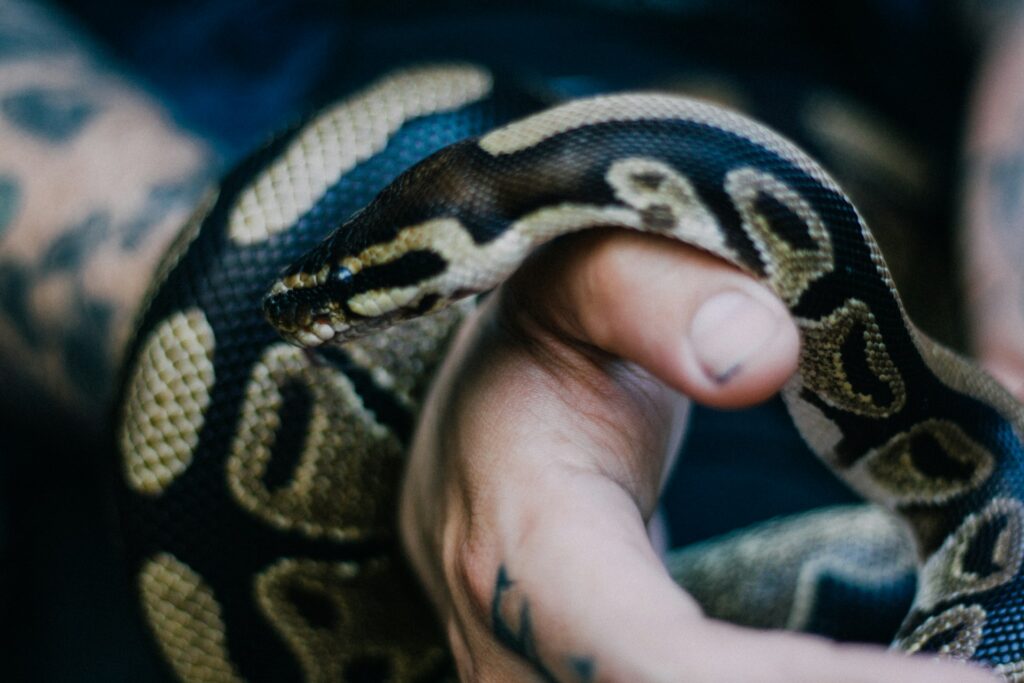
The hook and tail technique represents one of the most common methods used by professionals when longer-term control of a venomous snake is required.
This method begins with properly positioning the snake hook under the middle portion of the snake’s body, lifting gently to provide support while allowing natural movement.
Once the snake is stabilized on the hook, the handler carefully grasps the terminal portion of the tail between the thumb and forefinger, maintaining a firm but gentle grip that allows control without causing injury.
The critical safety aspect of this technique is maintaining appropriate distance between the handler and the snake’s head, which must be at least greater than the snake’s strike range (typically 1/2 to 2/3 of its body length depending on the species).
For faster species like mambas or certain cobras, an even greater safety margin must be maintained.
This technique requires significant practice with non-venomous species before attempting it with venomous snakes, as proper balance and control must become second nature.
Tubing Techniques for Safer Handling
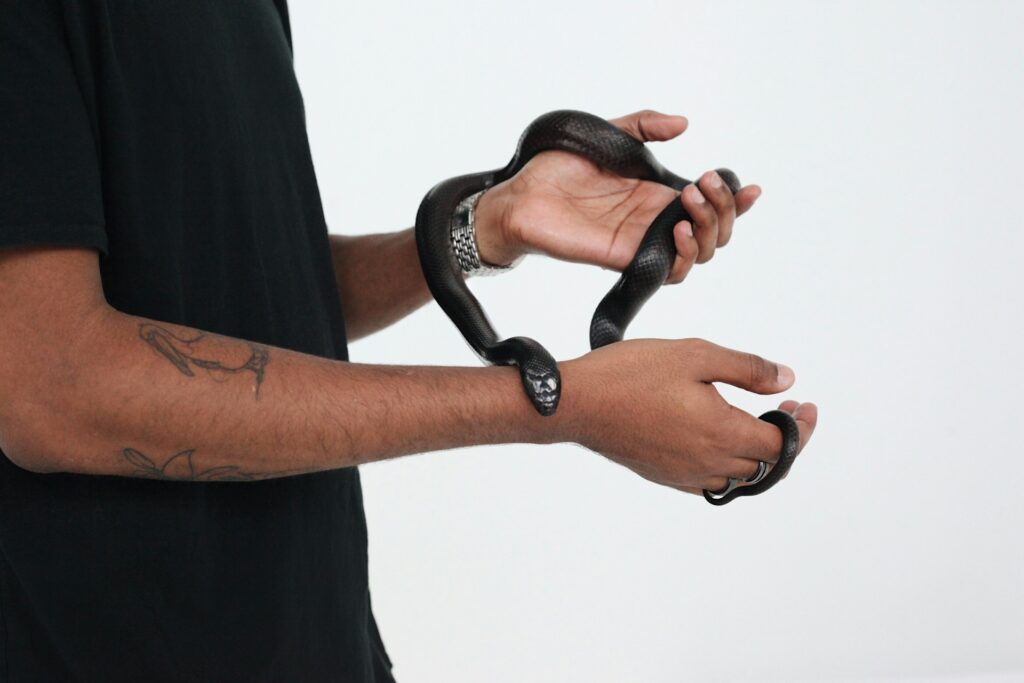
Tubing is considered the safest method for handling venomous snakes when close inspection, medical treatment, or venom extraction is required.
The process begins with selecting a transparent acrylic tube with an internal diameter that allows the snake to enter but prevents it from turning around inside the tube.
Using a snake hook, the handler gently guides the snake toward the tube opening, sometimes lightly tapping the tail to encourage forward movement.
Once the snake’s head and forward portion (at least 1/3 of the body) have entered the tube, the handler can secure the snake by grasping the exposed portion of the body while pinching the tube against the snake to prevent backward movement.
For extremely venomous species, a second tube may be employed for the tail end, creating a “double-tubed” snake with minimal exposure risk.
The most common errors with this technique involve using incorrectly sized tubes or attempting to force a resistant snake, both of which can lead to dangerous situations and should be avoided.
Emergency Protocols and Bite Response

Despite all precautions, bite incidents can occur, and every facility working with venomous snakes must have comprehensive emergency protocols in place.
The cornerstone of these protocols is immediate access to appropriate antivenom specific to the species being handled, with clear records of storage locations and expiration dates.
All team members must be trained in basic first aid specific to venomous snakebites, including proper limb positioning, wound care, and what not to do (such as applying tourniquets or attempting to suck out venom).
A pre-established relationship with the nearest hospital capable of treating venomous snakebites is essential, including direct contact information for relevant medical personnel.
Transportation plans should be established in advance, with consideration given to whether an ambulance or private vehicle would provide faster access to medical care based on the facility’s location.
Documentation of the exact species involved in any bite is crucial information for medical teams administering treatment.
Transportation and Containment Systems
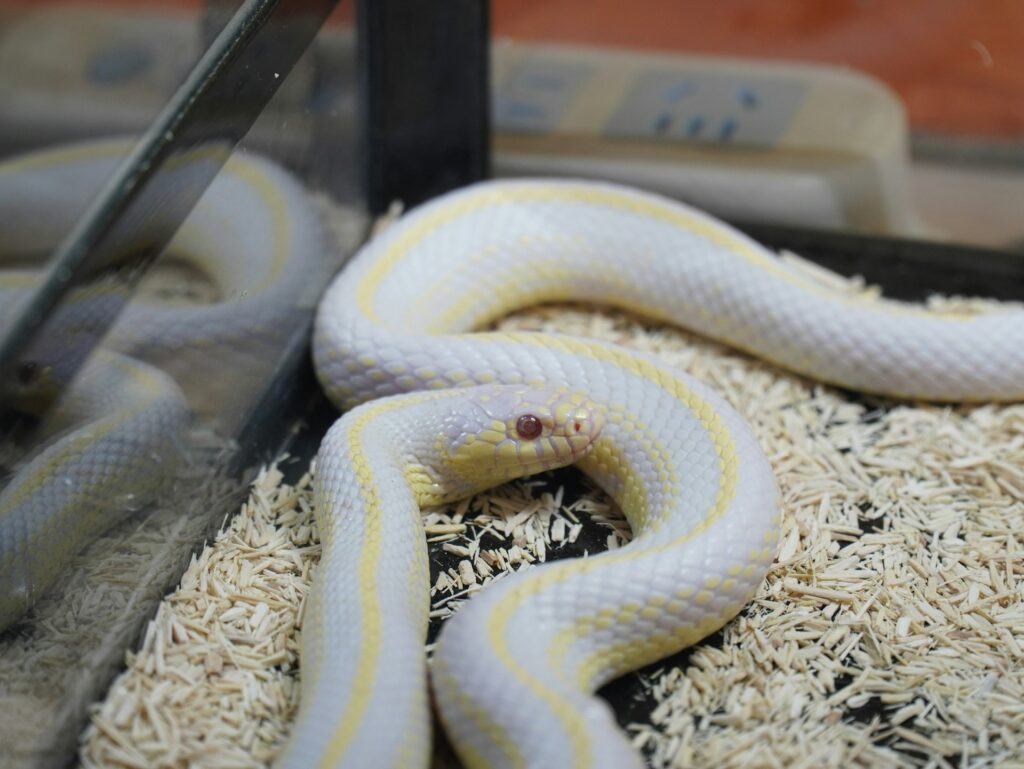
Safe transportation of venomous snakes requires specialized containment systems that prevent escape while maintaining animal welfare.
Primary containers should be escape-proof, typically featuring secure locking mechanisms, smooth interior surfaces, and appropriate ventilation based on the species’ requirements.
These primary containers should then be placed within a secondary container that provides additional security in case of primary container failure or damage. Proper labeling is essential, including clear “VENOMOUS SNAKE” warnings and specific species identification visible from all sides of the container.
Temperature control must be maintained during transportation, with insulation systems preventing dangerous temperature extremes that could either kill the snake or increase its activity level.
Vehicles used for transportation should feature separate compartments between the driver and the transported animals, with secure anchoring systems to prevent container movement during transit.
Documentation, including permits, health certificates, and emergency contact information, should accompany all venomous snake transports.
Specialized Techniques for Defensive Species
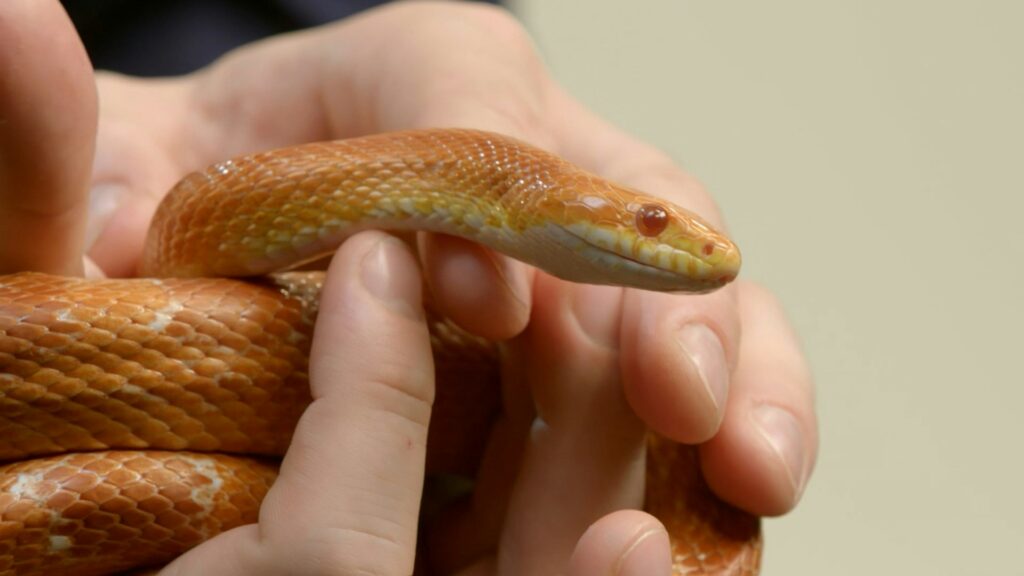
Certain venomous snake species present unique handling challenges due to specialized defensive behaviors that require adapted techniques.
Spitting cobras, which can project venom toward a threat’s eyes from distances up to 8 feet, necessitate face shields and positioning that keeps the handler’s face out of the targeting zone.
Tree vipers and other arboreal species often employ drop-and-strike tactics, requiring handlers to position themselves to avoid being struck from above.
Fast-moving species like black mambas and certain Australian elapids may require multiple handlers working in coordination with longer tools to maintain adequate safety distances.
Some species, such as the bushmaster (Lachesis muta), are known for extreme defensive reactions and may require temporary cooling to reduce metabolic rate before any handling attempts.
King cobras, which combine intelligence with size and toxicity, often require specialized handling chambers that restrict movement before any direct handling is attempted.
For all highly defensive species, minimizing handling duration and frequency is an important risk-reduction strategy.
Legal and Ethical Considerations
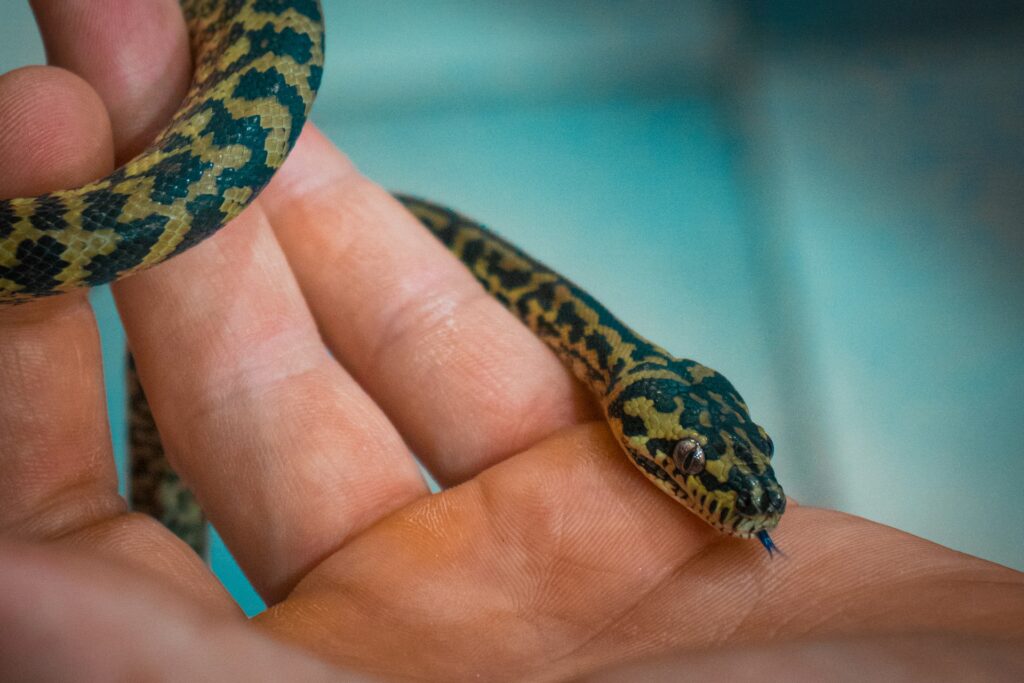
Working with venomous snakes involves navigating complex legal frameworks that vary significantly by jurisdiction. In the United States, permits are typically required at both state and sometimes local levels, with requirements ranging from basic registration to extensive facility inspections and insurance mandates.
International regulations like CITES (Convention on International Trade in Endangered Species) govern the movement of many venomous species across borders, requiring additional permits and documentation.
Ethical considerations extend beyond legal requirements, including ensuring that handling is only performed when absolutely necessary for research, conservation, education, or medical purposes. The welfare of the animal must be prioritized, with handling techniques chosen to minimize stress and potential injury to the snake.
Professional organizations like the Association of Zoos and Aquariums and the Society for the Study of Amphibians and Reptiles have established guidelines for venomous snake handling that set standards beyond minimum legal requirements.
Regular ethics committee reviews should be conducted for any program involving regular handling of venomous species.
Continued Education and Skills Maintenance
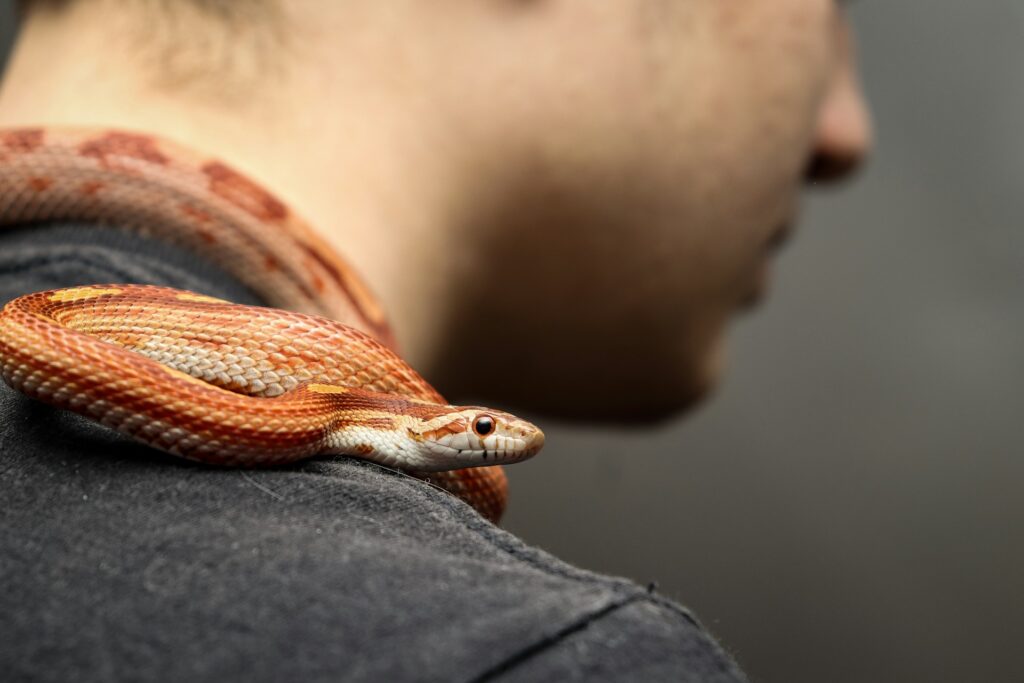
Handling venomous snakes safely is not a skill that can be learned once and retained indefinitely without practice. Professional handlers must engage in regular skills maintenance through continued education and supervised practice sessions.
Even experienced handlers should participate in periodic refresher training to prevent the development of dangerous shortcuts or complacency.
Staying current with peer-reviewed literature on venomous snake behavior, handling techniques, and medical treatment of bites is essential for maintaining best practices.
Professional networking with other experts provides valuable opportunities to share experiences and learn from incidents or near misses experienced by colleagues.
Many experienced handlers recommend maintaining handling skills with non-venomous species that mimic the behavior of venomous ones during periods when regular work with venomous species is not required. Documentation of all handling experiences, including any complications or unexpected behaviors, creates an important resource for ongoing skill development and protocol refinement.
Conclusion
The safe handling of venomous snakes demands a combination of extensive knowledge, rigorous training, proper equipment, and unwavering focus.
Even for experts, each handling event carries inherent risks that must be respected.
The techniques and protocols outlined in this guide represent current best practices in the field, but they are no substitute for formal training and supervised experience.
Professional snake handlers bear dual responsibilities: to protect their own safety and the well-being of these often misunderstood animals.
Through proper preparation, continuous education, and strict adherence to safety protocols, experts can work safely with venomous snakes while contributing to our scientific understanding, conservation efforts, and public education about these remarkable creatures.

